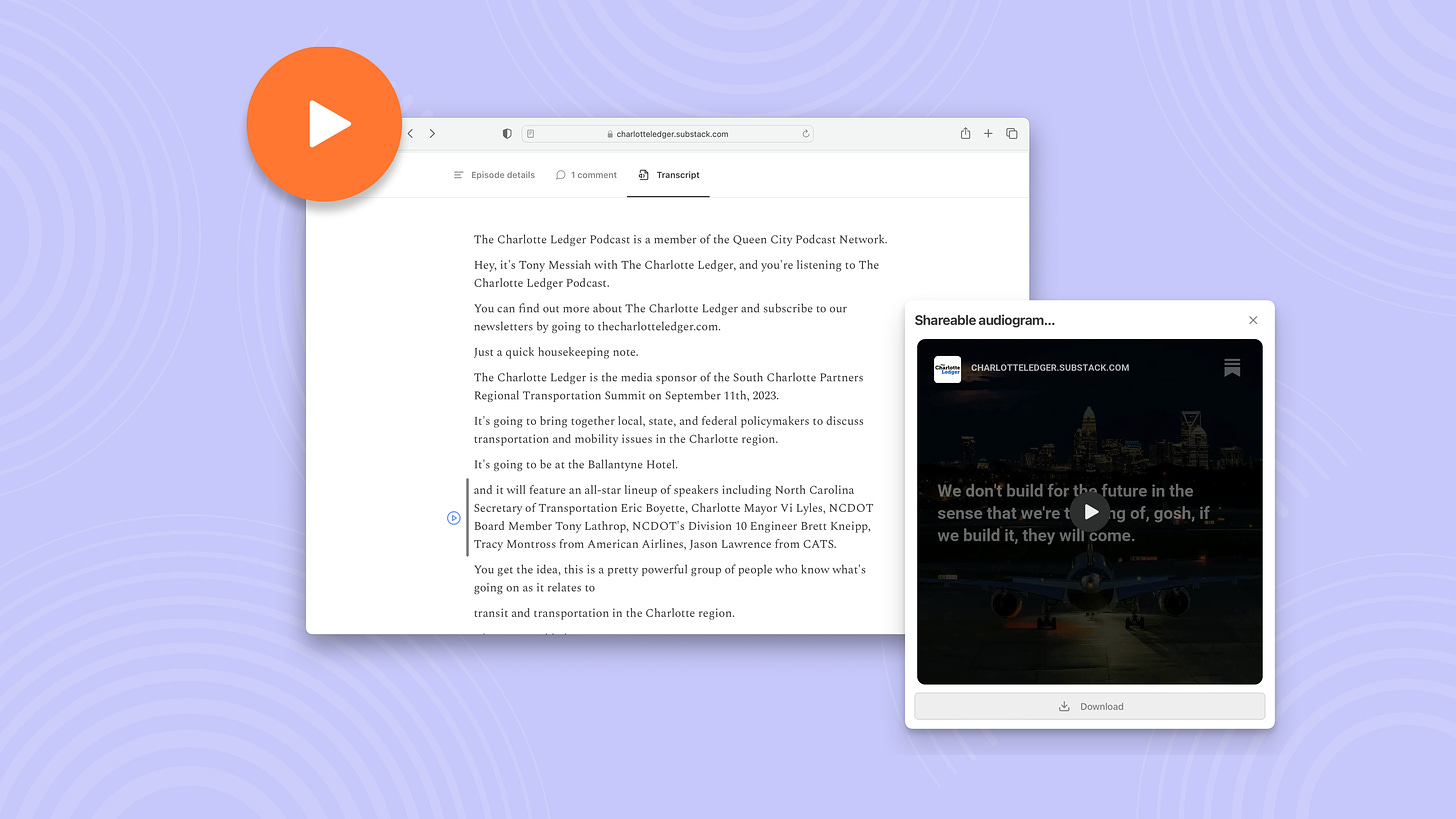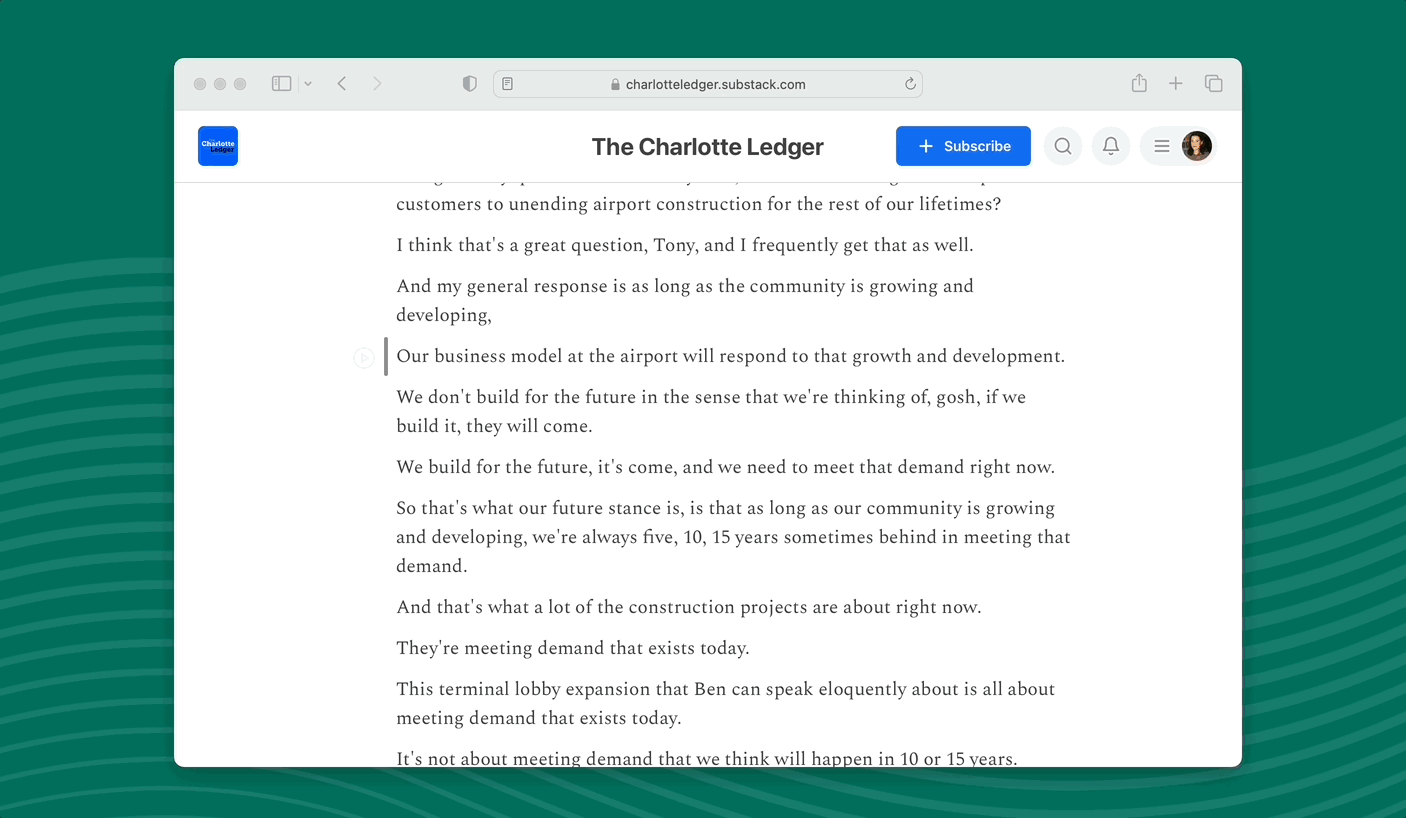We’ve just shipped some new features that make podcasting on Substack even better.
You can now use a special AI tool to create a clean transcript of your podcast episode or narration without having to do anything more than click a button.
The whole transcription process usually takes about a minute.
Once you’ve created the transcript, you can go in and edit it to make it just how you like it, and you can publish it in its own tab on the episode post page.
Then, you can select a passage that you can then use to generate a special audiogram that you can share to social media.
An audiogram is like a little static video with text and the audio playing over top. It’s a really neat asset to share to show off your podcast episode. (See the example below.)
We’ve done this all using cutting-edge AI tools, and it reflects our philosophy of not thinking that this AI stuff is ever going to take the place of work done by writers and creators—but instead we think it can give writers and creators super-powers.
In fact, this thing you’re reading right now is a transcript that we generated from the audio tool. I’m basically speaking off-the-cuff into a microphone and we’re using this as our announcement post. (Hopefully this technology can handle my New Zealand accent.)
To use these tools, you:
Go into your dashboard
Create an episode post
Then, when you’re in editing mode, you upload your audio, and you’ll pretty quickly be presented with an option to generate the transcript.
You click the “Generate Transcript” button and you wait a second, or maybe a minute, and then in very short order you have a beautiful transcript to work with.
You can go in and review that transcript in the backend before you publish it, and you can edit it.
When you publish it, there’s a default-on toggle that will make sure that the transcript will show up in the post alongside your episode. (You can also turn that off if you need to.)
Once the transcript is published, you can select a passage and then click “Make audiogram” to generate the social sharing asset.
All of these tools are in their very early stages and they’re only going to get better and better. Stick with us for a while, because while they may not be perfect at first glance, they are going to rapidly evolve. We want you to have fun with them though, so we want to get this out to you sooner rather than later.
We already are getting great feedback from writers who are having a great time with this new tool.
For instance,
, who publishes The Charlotte Ledger, said the following about using the podcast tools: “The transcripts of the podcast are really, really good! Surprisingly good.”He’s used other mainstream tools to do podcast transcriptions and found them not as fast and not as accurate.
And
, who publishes Sinocism, a China newsletter, the first ever publisher on Substack, he got early access to these features and he’s tried them with two podcasts, his Sinocism Podcast and his weekly Sharp China Podcast. He said he has tried several outside services for transcripts, both machine and human generated, and the Substack service, this one, was much better already than those other services he’s used.So, go to your dashboard now, create an episode post. You’ll see the options to generate a transcript and you can start having fun.
We’re really interested in your feedback. As I said, these are the early days, so please leave a comment or send us an email or—you know—send us a podcast episode and link to it on Substack Notes.
Thanks everyone. Enjoy these new tools.
Add a podcast to your existing Substack or start a new one. Visit the Help Center to learn more about podcasting.















Share this post